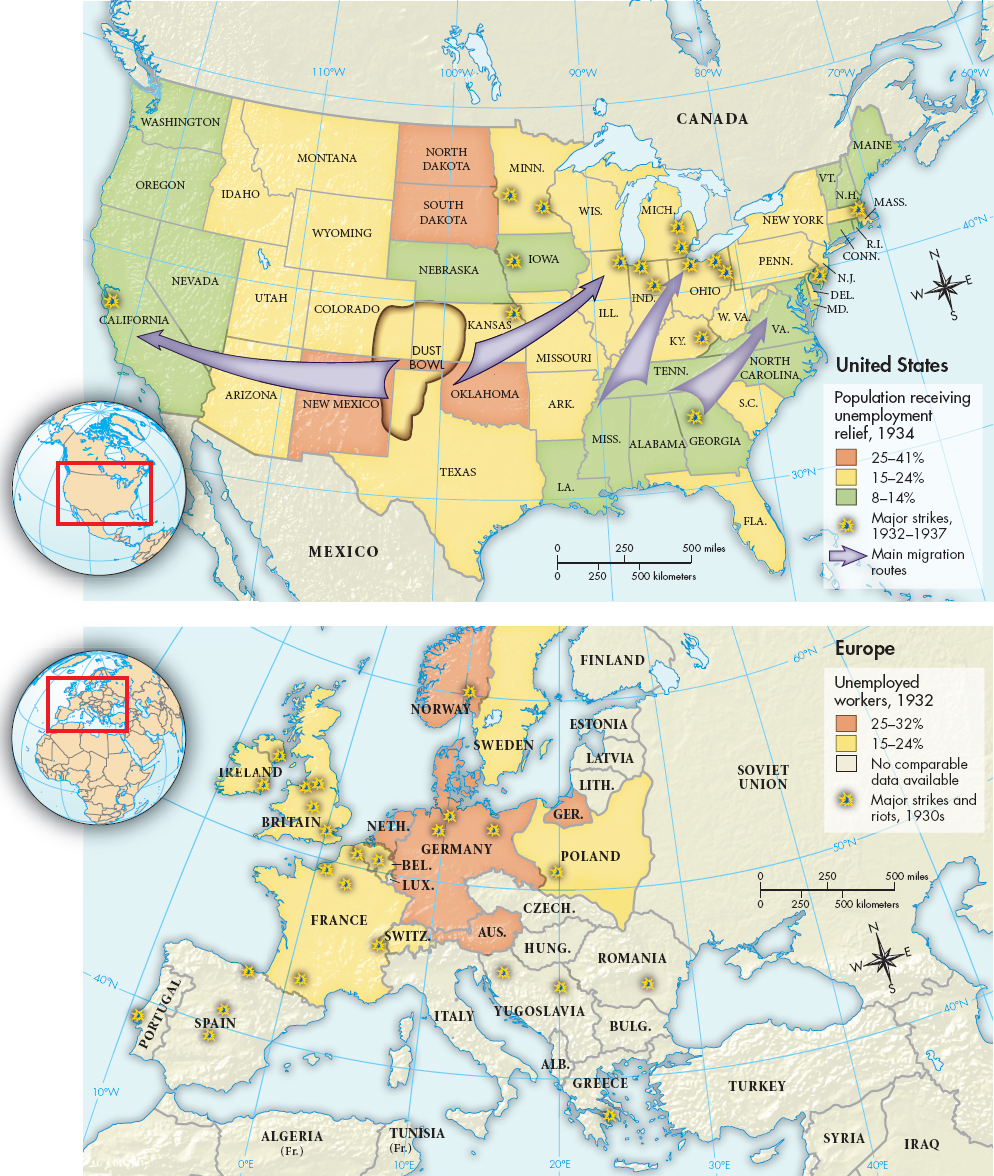What were the causes and consequences of the Great Depression?

Homelessness in LondonThe Great Depression of the 1930s disrupted the lives of millions across the United States and Europe. The frustration and agony of unemployment are evident in this common scene of homeless Londoners wrapping themselves in newspaper against the cold. (Mary Evans Picture Library/The Image Works)
TTHE FRAGILE OPTIMISM OF THE LATE 1920S was short-
The social and political consequences of the Great Depression were enormous. Mass unemployment and failing farms made insecurity and unemployment a reality for millions of people (Map 26.1). The prolonged economic collapse shattered the fragile political stability of the mid-

MAP 26.1 The Great Depression in the United States and Europe, 1929–